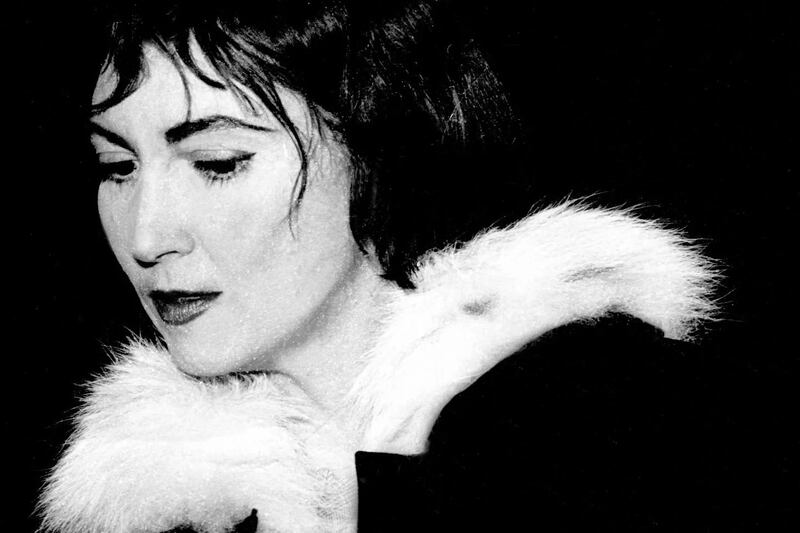The version of Amhrán na bhFiann played at the French embassy’s Bastille Day party, as I now know thanks to readers, was a 1965 recording by Our Lady’s Choral Society and the Radio Éireann Symphony Orchestra.
That may help explain the nervous amusement with which the anthem was greeted, at least in my corner of the ambassador’s back garden, on Monday night.
This was the first version of The Soldier’s Song – as the anthem was still generally known back – ever recorded, it seems.
And it was soldierly in more ways than one, since the conductor was Col James Doyle, a veteran of 40 years of Army service dating back to just after the Civil War.
The night a ‘sputnik’ crash-landed in rural Wexford
‘A breakthrough in the case of my stolen Dublin Bike and the subsequent €150 fine’
A daisy with a doctorate? Frank McNally on the enrolment of ragwort in the rewilded lawns of Trinity College
Ballet Go Backwards – Frank McNally on Patrick Kavanagh’s short-lived career as a dance librettist
Our Lady’s Choral Society is still with us today: they’re the people who sing Handel’s Messiah at its place of origin on Dublin’s Fishamble Street every year.
But the choir was set up in 1945 as an avowedly Catholic institution.
So arranged as it was on the eve of the 1916 jubilee celebrations, and several years before the renewed Troubles, their anthem of 1965 may have symbolised the high-water mark for an unapologetic, Catholic nationalism. For good or bad, nobody sings it like that anymore.
Mind you, the recording still has fans, here and abroad. Comments under a recent YouTube posting of it include “bravo”, “beautiful”, and “best rendition”. A French poster has commented: “Quelle emotion”. A German was moved to say: “God bless the [emerald] island.”
But perhaps the most telling response, accompanied by a tricolour, is a joke on the version’s martial qualities: “Sounds like my country won a world war lol.”
Few people at Monday’s party were familiar with the recording. And part of the reason it provoked giggles is that it attacks a listener’s ears without warning.
There is no orchestrated lead-in. Instead, you hear a short drum-roll, followed suddenly by about 300 voices mounting an air-and-land assault on the anthem’s opening word.
It’s no coincidence that the key is E-flat major, typically associated with heroic music, thanks to Beethoven’s use of it in the Eroica Symphony, Emperor Concerto, and Grand Sonata.
Even before Beethoven, Italian music theorist Francesco Galeazzi championed its credentials over a similar and rival key. E-flat Major was “a heroic key, extremely majestic, grave and serious,” Galeazzi wrote: “in all these features it is superior to that of the C.”
Mind you, had he been at the Bastille Day party, Dmitri Shostakovich might have giggled too. He also used the key, but for satirical purposes, in his Symphony No. 9 in E-flat Major (1945).
The work was originally intended to celebrate the Soviet Union’s defeat of Nazi Germany. But its lampooning of the concept of military glory and other perceived sins saw it condemned for “ideologic weakness” and failure to “reflect the true spirit of the people”. It was later banned.
Such is the fervour of the 1965 Soldier’s Song that it comes as no surprise, somehow, to learn it was recorded by a choir synonymous with the Hallelujah Chorus.
That was written in D Major, yet its anthemic qualities are famous too. Or at least the tradition of audiences standing up during the chorus are said to date from the Messiah’s London premiere (in 1743, a year after Dublin), when King George II rose to his feet for it.
The theory, or one of them, is that he mistook it for the British national anthem, perhaps having nodded off earlier in the programme.
This in turn reminds me of something I read years ago about synesthesia, the neurological phenomenon by which hypersensitive musicians experience notes as colour.
The condition affected composers including Lizst and Rimsky-Korsakov, while Alexander Scriabin went so far as to develop the concept into a formal spectrum.
Comparing notes, he and Rimsky-Korsakov agreed that D major was “golden brown”, but they differed sharply on E flat major, which Scriabin saw as red/purple but Rimsky-Korsakov thought was blue.
The colours of the 1965 Soldier’s Song, of course, were green, white, and orange – at least on the label of the vinyl single.
So it was on the choir’s album of the same year, “Ireland Mother Ireland”, also conducted by Col Doyle with a young Bernadette Greevy on vocals. That had a strip of green across the top, orange at the bottom, and a picture of the Rock of Cashel in between.
Worrying that some might “flinch” at its title, Irish Times critic Charles Acton made allowances for the fact that the album had been “produced mainly for the vast potential American market”.
And apart from the “mawkish” title tune, he found the rest of the collection of traditional ballads “remarkably agreeable”.
But in describing the album cover (without the benefits in those days of a colour photograph), he referred to a “green band” at the top, and an “orange band” at the bottom.
Then he felt the need to clarify that, by an orange band, he didn’t mean one of the kind that played flutes.















